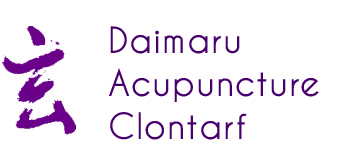

August 29th, 2010 | Posted in 2 Pain, Injuries, Sports
Shoulder pain can be the symptom of several different injuries or conditions. These can include Adhesive Capsulitis (limited range of movement due to a shoulder injury), a strain or fracture (due to an injury or overexertion), tendinitis (inflammation of the tendons inside the shoulder), and others.
‘Frozen‘ is most common on the right side and at the age of 40-50, from Winter to Spring. It can go by itself in about 3 months if homeostasis is good. You can speed up the repair with acupuncture, and/or reduce the intensity of the pain while it heals.
It can be due to  (1)  Inflammation   (2)  Calcium Deficiency  (3) Overuse or Age.
It is treated with acupuncture according to its differentiation.
1. holding arm up and pain is on the outside+deltoid   =   LI channel
2. moving arm back and  pain is on the outside (comb hair)  =   TH/SI
3. moving arm fwd and pain is on the  inside (wash face)      =   LU
4. a combination of all of the above.
Irish Times Health Tues. May 15th 2010.¬†¬†¬†¬†¬† Arthroscopy is a procedure used to examine or repair the tissues inside or around the shoulder joint e.g. the rotator cuff‚ÄĒa group of muscles and tendons that cover the shoulder joint. They hold the arm in the joint and allow the shoulder to move in different directions. They can be easily damaged due to overuse or injury. Recovery from arthroscopy surgery can take up to six months, depending on the extent of the original damage and the amount of repair possible. A sling may have to be worn for the first week. Pain medication is usually required until the shoulder starts to recover. Physiotherapy may be used to help regain motion and strength in the shoulder. Using arthroscopy for rotor cuff repairs or tendonitis usually relieves the pain but you may not regain all of your strength.
Research:   ACUPUNCTURE & FROZEN SHOULDER
In a Hong Kong study, 35 patients with frozen shoulder were randomly assigned to an exercise group or an exercise plus acupuncture group. Mobility, strength and pain were assessed (blind) at outset, after 6 weeks and at a 20-week follow-up. The acupuncture protocol consisted of deep (2.5 cun) contralateral needing of the extra point Zhongping (1 cun inferior to Zusanli ST-36, midway between the tibia and fibula) with one minute of lifting, thrusting and rotation manipulation repeated three times during a 20 minute retention to produce strong deqi . The patient was asked to exercise the shoulder during the treatment. Improvement scores (measured by the Constant Shoulder Assessment) showed significantly greater improvement in the acupuncture group (76.4% versus 39.8%) at 6 weeks, and these were maintained at follow-up (77.2% versus 40.3%). (Hong Kong Med J 2001;7:381-91).
Tennis Elbow is the term used to describe the inflammation of the outer elbow tendon, which is a common injury among tennis players. This inflammation, called tendinitis, is generally the result of a repeated injury or stress to a particular tendon over time that results in pain and swelling around the joint.  Although called tennis elbow, tendinitis of the outer elbow tendon can occur in any individual who turns his/her wrist or grips an object repetitively.  This is often seen in gardeners, carpenters, golfers, dentists and musicians.
Elbow Problems can be due to:‚ÄĒ
Elbow problems are treated with acupuncture according to their differentiations.
